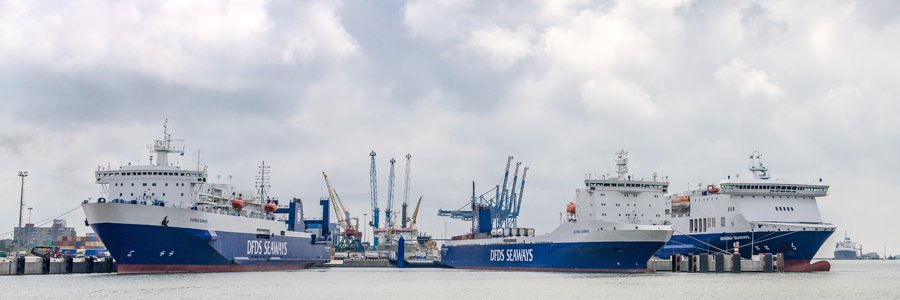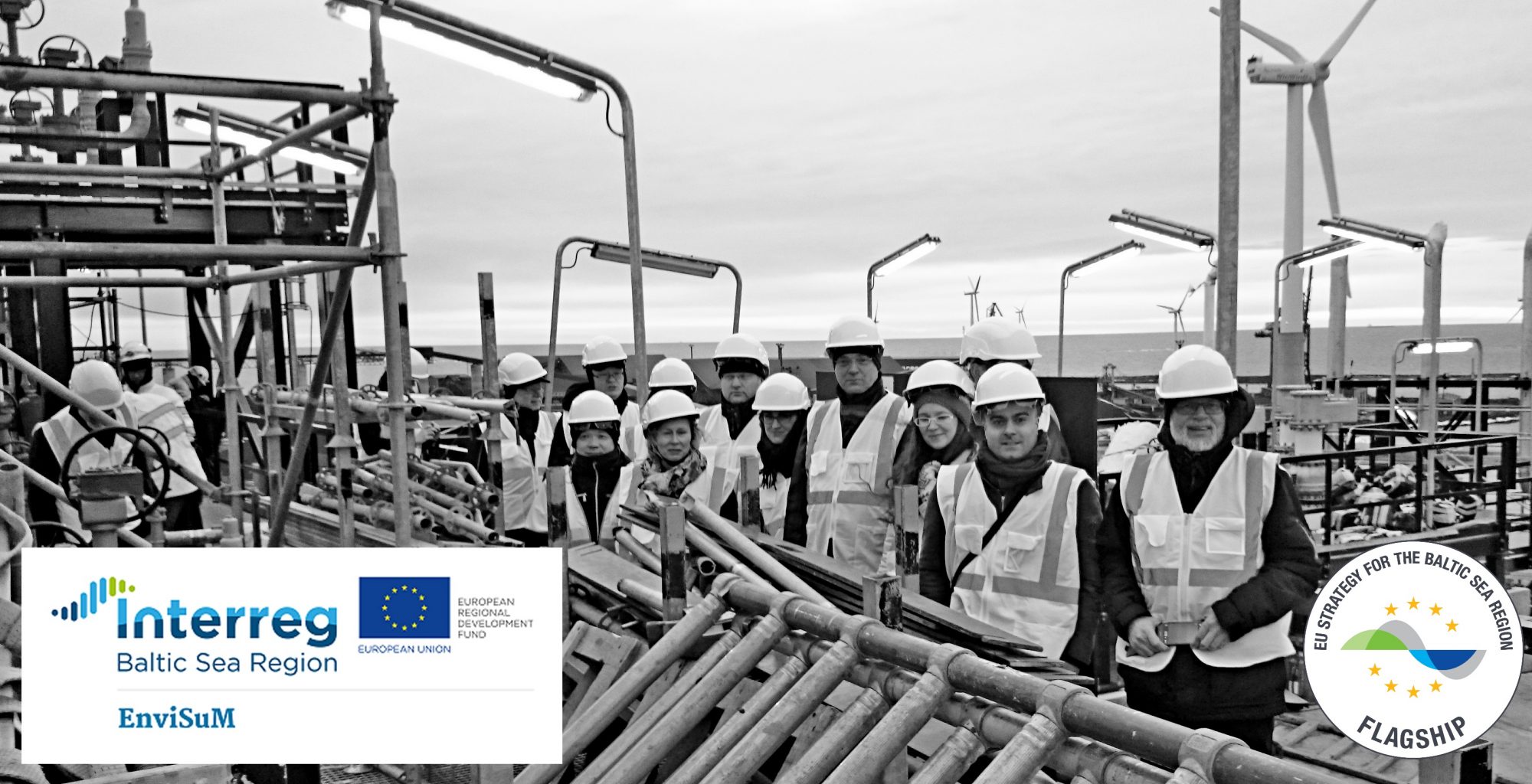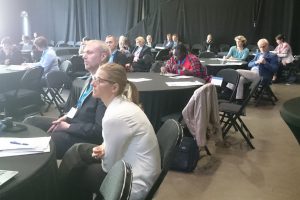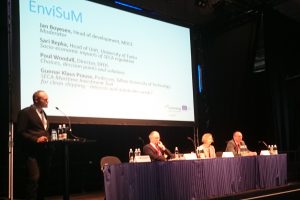Read about our project from the Interreg News page.
https://www.interreg-baltic.eu/news.html

Ships in the Klaipeda terminal and the rest of the Baltic Sea have very low sulphur emissions (© DFDS/Andrius Pelakauska)

Read about our project from the Interreg News page.
https://www.interreg-baltic.eu/news.html

Ships in the Klaipeda terminal and the rest of the Baltic Sea have very low sulphur emissions (© DFDS/Andrius Pelakauska)
 This survey is about the Economic impacts of Sulphur Emission Control Area (SECA) regulations on maritime market stakeholders. Your comments will help policy makers get a better view of your challenges as a Maritime stakeholder in your compliance, improve human health and protect the environment of BSR.
This survey is about the Economic impacts of Sulphur Emission Control Area (SECA) regulations on maritime market stakeholders. Your comments will help policy makers get a better view of your challenges as a Maritime stakeholder in your compliance, improve human health and protect the environment of BSR.
The final result will be consolidated together with other project activities into a final “Economic Guidelines for SECA” comprising of policy and business recommendations, and an “Investment Decision Tool” for all Maritime stakeholders.
Typically, survey takes 10 -15 minutes to complete.
Thank you for your time and feedback!
http://sgiz.mobi/s3/EnviSuMSurvey
Sulphur Emission Control Area (SECA) was created in May 2005 to enforce a stricter control to minimize airborne emissions from ships. Thus ships that operate within SECA must use on board fuel with sulphur content of no more than 0.1% from 1 January 2015. The implications of this clean shipping regulations on the activities of the maritime stakeholders is directly and indirectly linked to the economic decision that will ensue in their efforts to comply.

EnviSuM project will arrange Learning Café on Wednesday 26th of October. Sulphur Emission Control Areas – The economic, environmental and technical impacts on the shipping industry are the topics of Learning Café. The event will take place during Danish Maritime Days in Copenhagen.
What are the new business opportunities in SECA? How do we monitor compliance? What are the pros and cons of different technical abatement technologies? And what are the health and environmental effects?
Join us to discuss these topical questions in the learning café!
See more information and register to the event:
EnviSuM Learning Cafe on 26th October
Health, economic and environmental effects of the SECA regulation and the needs of the maritime industry when making clean shipping investments


Main conclusions from the workshop:
• It is expected that the real life air emissions measurements from the EnviSuM project will show differences compared the laboratory tests, especially during conditions such as start-up of the engine.
• The SECA regulation has generated positive impacts. However, the use of open loop scrubbers which use water to clean the exhaust gases leads to potential increased water pollution. This especially creates problems at ports. More knowledge on the impacts of scrubber discharges to the sea is needed.
• Water and atmospheric emissions are regulated by different frameworks which can lead to sub optimisations and lower overall environmental performance from shipping.
• Close loop and hybrid scrubbers exist which have no discharges to the sea. The EnviSuM project will study emissions from dry scrubbers.
• DFDS considered several options prior to the implementation of SECA such as marine gasoil, LNG, heavy fuel oil with scrubbers and network changes. However, during 2013-2014 there was huge uncertainty regarding technologies, performance and costs. This made decisions difficult.
• Regulation should be holistic and long term. Apart from SOx and NOx emissions it is important to focus on Green House Gas emissions as well as impacts on human health from particles.
• Particles are hard to measure reliably which makes the analysis difficult and expensive. This problem will be tackled in the EnviSuM project.
• The EnviSuM project will develop an investment tool for clean shipping in order to help shipping companies’ with their investment decisions. This will also help disseminate the project results to decision makers and authorities.
• An emission measurement network for different contaminants around the Baltic Sea was also an important issue for the debate. There exist land measuring points. During the EnviSuM project three city/port areas (Saint Petersburg, Gothenburg and Gdansk-Gdynia) will be target areas for close examination.
• Due to the global status of the shipping industry the rules and solutions should be global and not regional for e.g. the EU.
• The common opinion at the workshop was that regulation should be better planned.
• It is important to support research, development and innovations in order to find novel solutions.
Technical Efficiency and Socio-Economic Impacts of Clean Shipping Solutions
This workshop will address health-, socio-economic and environmental effects of the SECA regulation and will explore the needs of the maritime industry when making clean shipping investments. Join us for a discussion on the effects of and the cost-balance of the SECA regulation during the European Maritime Day in Turku, Finland
Welcome by the hosts
Mr. Jan Boyesen, Development Manager, Maritime Development Center of Europe
Studying socio-economic impacts of SECA regulation
Mrs. Sari Repka, Head of Unit, University of Turku
How the SECA affected DFDS – Choices, decision points and solutions
Mr. Poul Woodall, Director Environment & Sustainability, DFDS
SECA Maritime Investment Tool for clean shipping – Interests and stakeholder needs?
Gunnar Klaus Prause, Professor of International Business, Tallinn University of Technology
Discussions
Moderator: Mr. Jan Boyesen, Development Manager, Maritime Development Center of Europe
Conclusions and End of workshop
Moderator: Mr. Jan Boyesen, Development Manager, Maritime Development Center of Europe
When: 18th of May 2016, 10:45-12:15
Where: Turku, Finland
Venue: Logomo, LOGI3, Köydenpunojankatu 14
This area is for the news, blogs, comments etc.